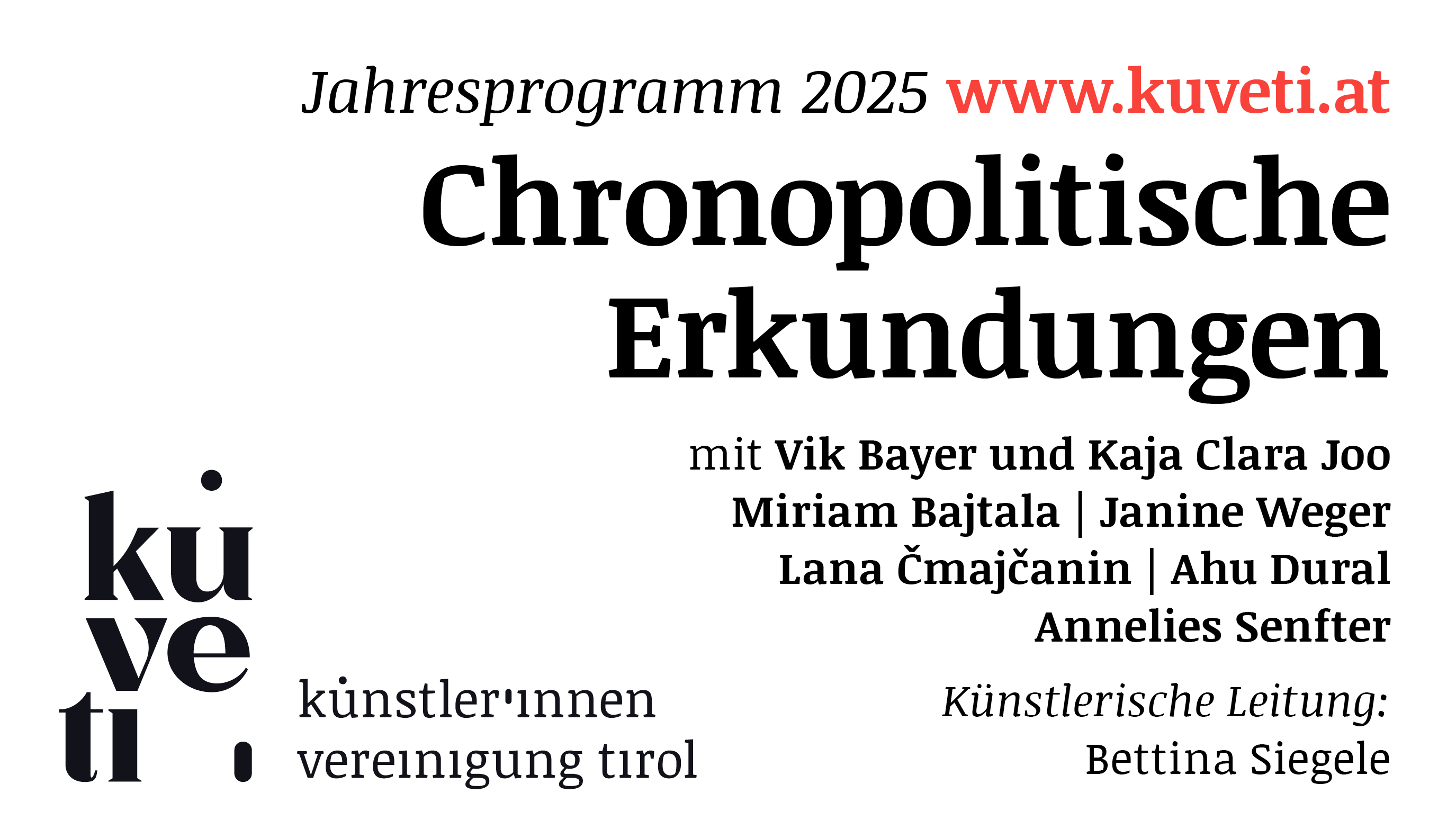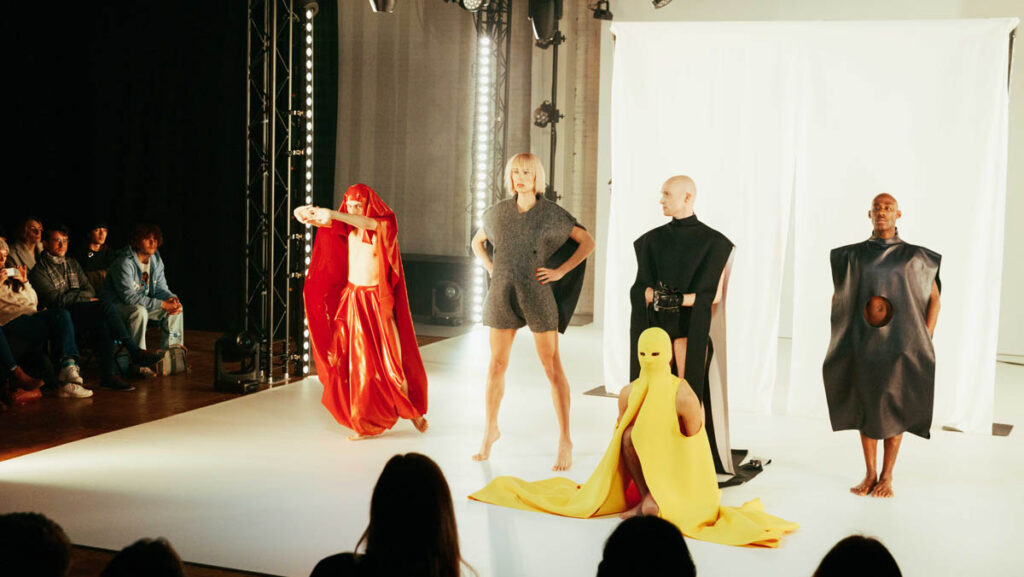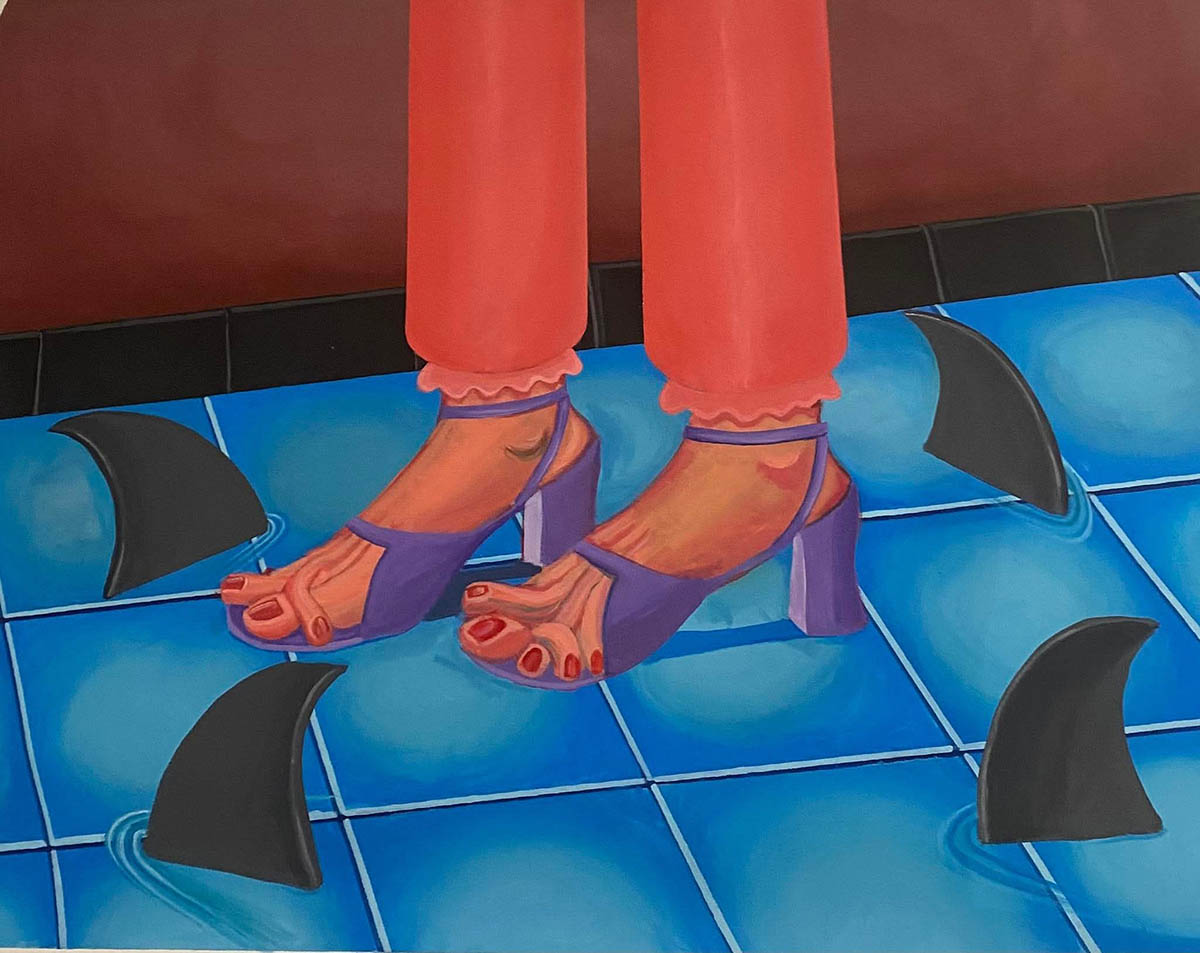
He studied in a small regional school of fine arts, a small state institution that would not exceed 80 students perched from the top of a mountain in Kabylia, a school cut of the world, and in the end, all the students would find themselves unemployed or would change fields altogether, and Lounis finds all that inspiring for his work. To take his life and his work with more humour, it’s the only way to fill the emptiness.
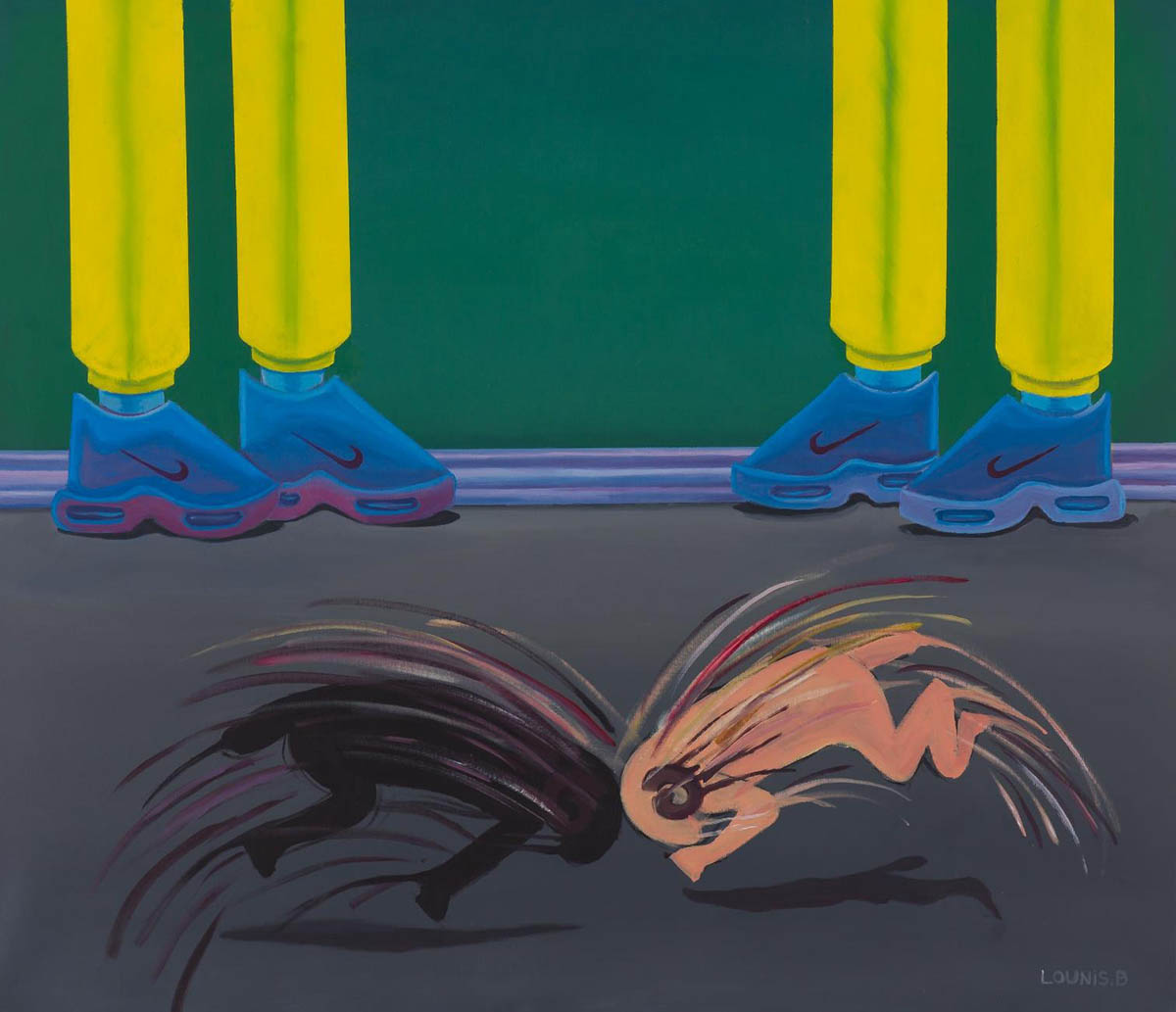
Rivality acrylic on canvas ,1m60x1m10 cm ,2022 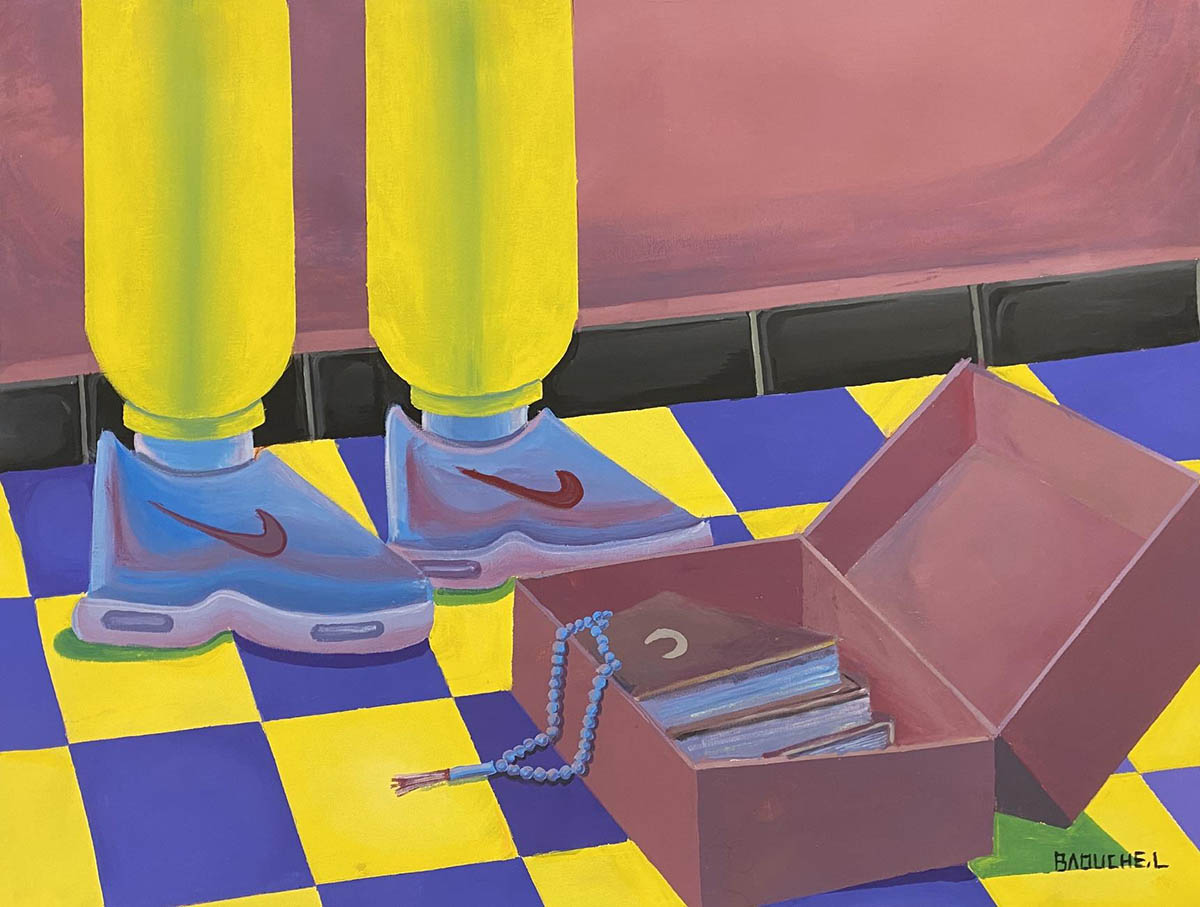
Monothéiste, 2021. Acrylique sur toile. 103×72 cm
What is your background?
I graduated in 2018 from the School of Fine Arts in painting class. During my years of study, in parallel with training, experiences, and skills, I acquired further by participating in cultural events and exhibitions of an individual and collective nature. I exhibited in Paris in 2021 and at the Liste Art Fair Basel in Switzerland in 2022 with the rhizome gallery, with which I have been working for two years now. the rhizome is based in Algiers, and works to promote emerging contemporary artists and the diaspora, with an emphasis on art in Algeria. I exhibited at the Abu Dhabi International Art Fair a week ago with foreign agent Olivier Chow. Besides painting, I also do ceramics, illustration, and narrative fragments such as comic strips, photography, and video. I made, for example, a short film of 8min 27sec entitled „.Mosaïque solitaire“. The film takes us on a journey starting from my anger at the invasion of red bricks in our urban landscape to questioning our relationship to art through famous works.
What is your favorite medium?
Right now, it’s true that I’m much more attracted to painting, but not to the point of condemning myself to just painting. I don’t like to work with just one mechanism or one form, like a cook, i.e. get up in the morning to prepare my colour palette and my utensils. As in the case of cooks who get up early to peel the same vegetables and prepare the same dishes of the day throughout the year, I mentioned the job of cook it’s because I worked as a cook that’s why I stopped this job.
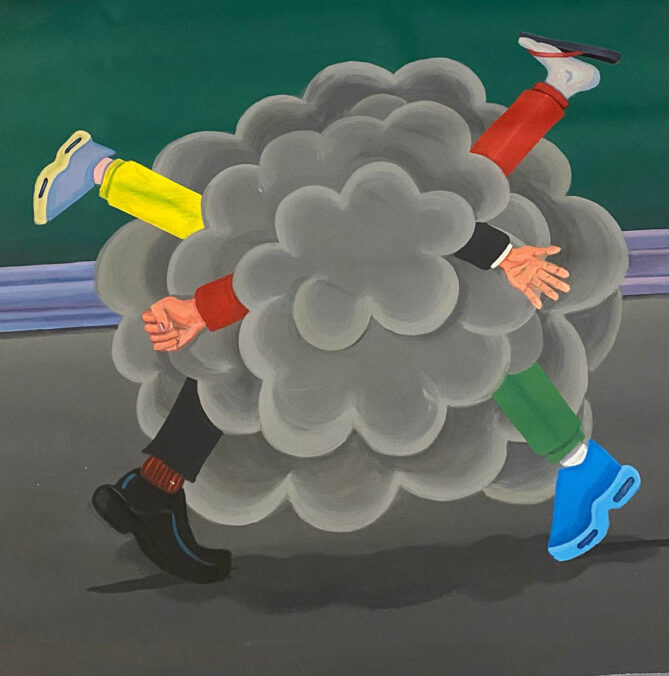
Street fighting acrylic on canvas 2022 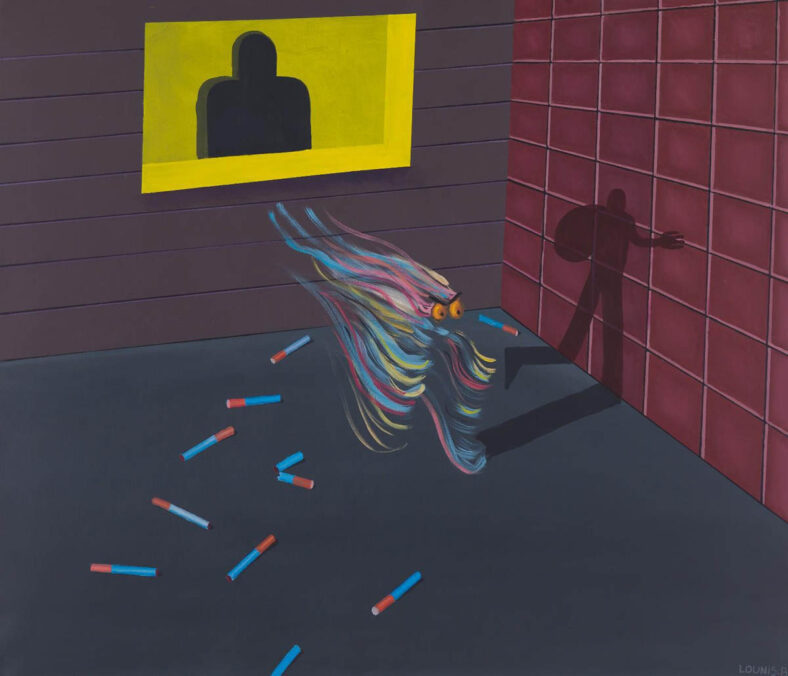
The cigarette thief acrylic on canevas . 103x 118 cm 2022
How would you describe your work?
Sensitive to narrative context. At the heart of my work are nostalgic moments and quotes from the childhood and cartoons of my generation. The inexperienced hand, the imperfections. Geometric shapes, animals, video games, abstract squiggles, cars, matchboxes, toys, and bizarre scenarios are recurring motifs that form my work. My works often look like a messy child’s room. It’s childish anarchy that invites the absurd. Sensitive to the narrative context of territories; I have a particular interest in current events and collective imagination that I transpose into my work in order to establish a sensitive dialogue between form, object, and history.
I like to try to make false predictions, to do anticipation in art, but in a naive way, and to create characters to deflect censorship.
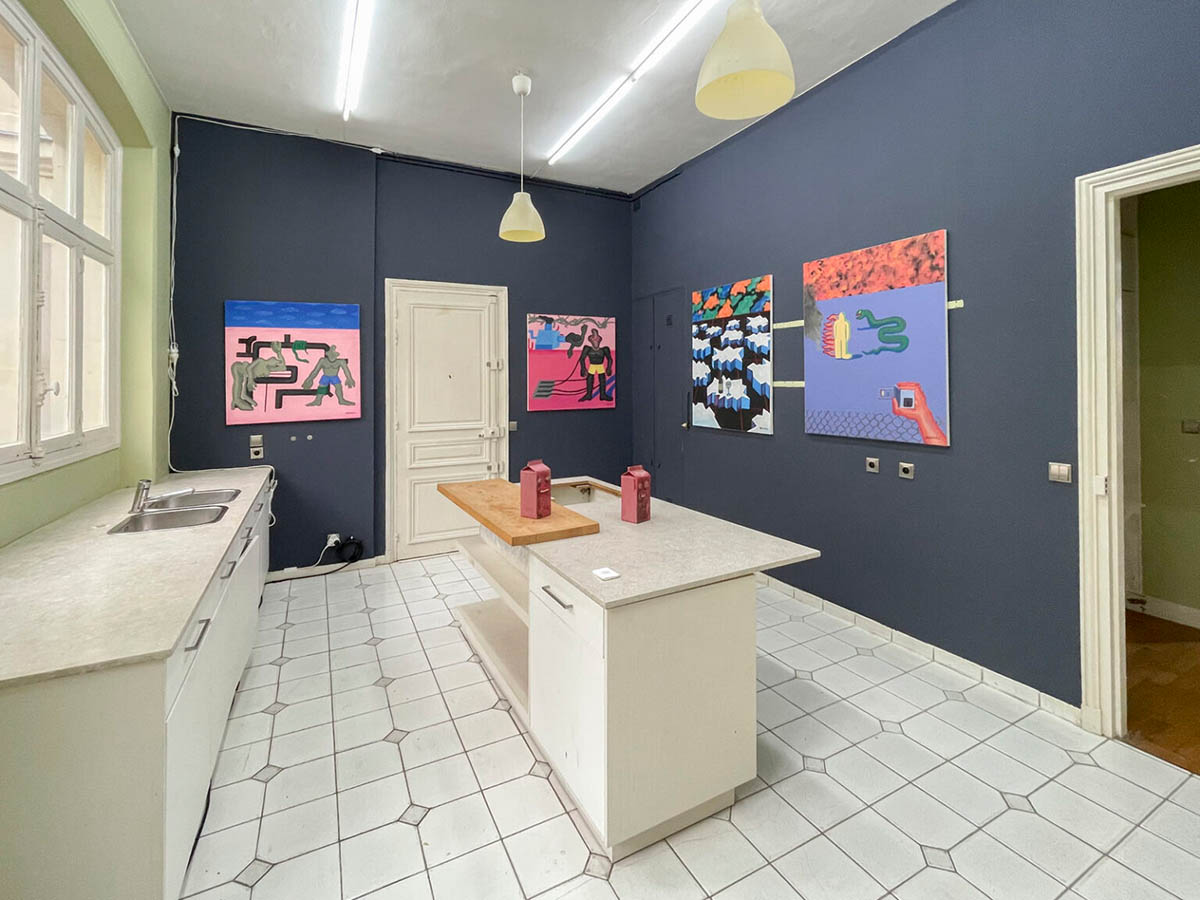
What inspires you the most?
In my work, I engage with the ropes of dystopia and practice asserting a world that feels familiar to me. I am interested in the elements that shape the collective imagination and how the archetypes that define human relations are constructed, by inserting characters from the fragment of history, bodies in pieces, and geometric shapes on plastery backgrounds that end up forming fragments of narrative.
Do you have a special hobby?
My hobby is going out to see the sea, far from all those clichés of the artist who seeks inspiration, nothing to do with that. And I like especially eating, who does not like to eat, no one I think.
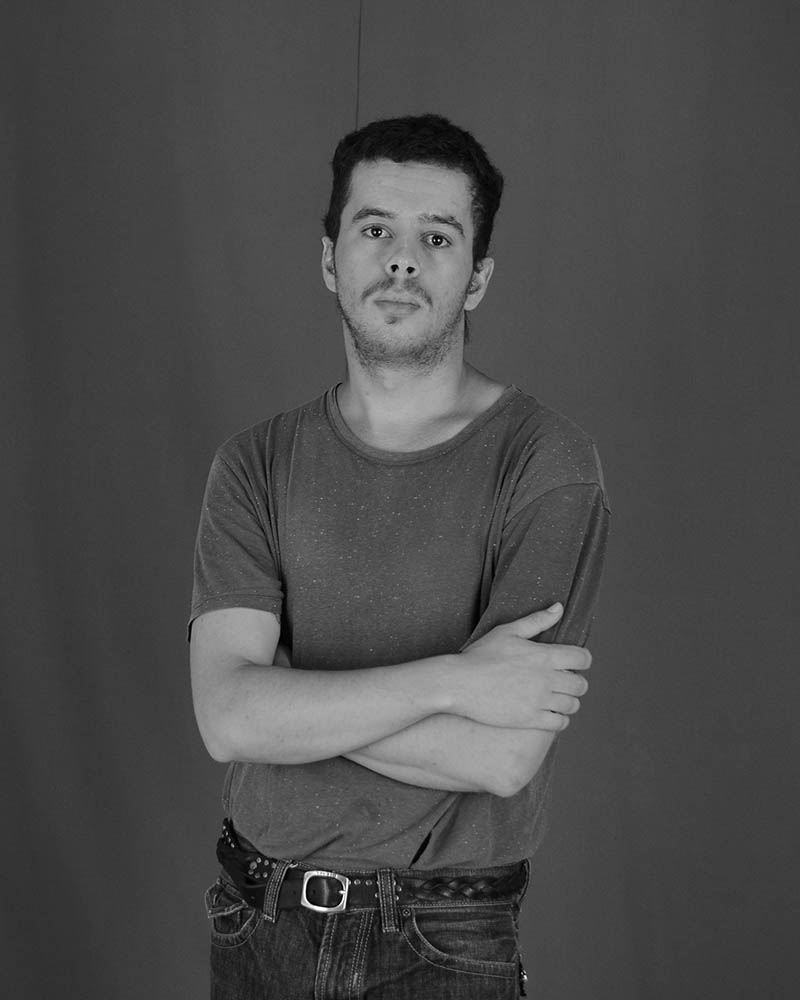
Why did you come to Bejaia? What is the art scene like there?
I grew up in a planned city that is dominated by the geometric shapes of prefabricated buildings. In an ex-Soviet urban landscape with its industry and geometric design, where I spent all my childhood. It is shaped by countless concrete blocks, flowerbeds, full clotheslines, colorful playgrounds, and many childhood memories. Bejaia or Bgayet were richer in history in its past than in its present. Many scientists, mathematicians, philosophers, Europeans, and Italians came here to study in the Middle Ages, today the city is an industrialized one and all the artists of this city have left the region to join the capital Algiers or leave the country altogether.
Do you already have plans for 2023?
Yes, right now I’m working with the rhizome gallery for a solo show in early January 2023.
Lounis Baouche – www.instagram.com/parasite094/



